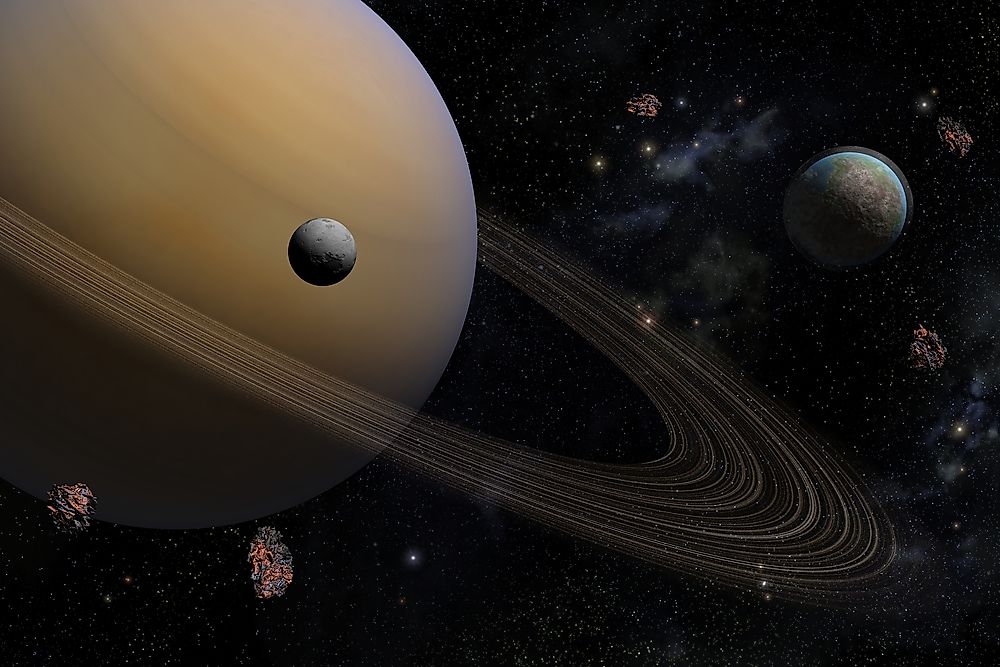Where Are Lakes Found Outside Planet Earth?

A lake is an area filled with water that is localized in a basin and they found on or beneath the surface of the earth. Lakes are usually surrounded by land and are not part of an ocean or sea. Rivers, streams or rainwater fills lakes thus making them vary in size depending on the volume of water coming in or getting out of the lake. Closed or endorheic lakes do not have any form outlet and often do not contain fresh water while fresh water lakes have outlets on land or underground. Artificial lakes are constructed to provide industrial power generation, domestic water supply, recreation, and agricultural activities. NASA’s recent studies show that lakes are not unique to earth alone because there are evidence of water bodies on other planets, moons, and celestial bodies in our universe.
Kraken Mare
The Kraken Mare is the largest body of fluids found on Saturn’s largest moon, Titan and it is thought to be larger than the Caspian Sea on Earth. The name Kraken originates from the legendary sea monster dwelling off the Norwegian coast (a being from folklore) called Kraken. Cassini space probe discovered this lake in the year 2008 and measured 154,441 square miles in area. In detail, Kraken Mare might be 175 yards deep and shows signs of slow moving wave motions. Observers believe that this lake consists of hydrocarbons. There are plans to insert a probe mission inside the lake to collect more data.
Ligeia Mare
On the north pole of Titan, the Ligeia Mare sits next to the Kraken Mare and, just like its neighbor this lake’s contents are mainly hydrocarbons, primarily methane and some organic compounds as well as ethane and nitrogen. The Ligeia Mare measures approximately 260 miles by 217 miles across with over 1240 miles of shoreline. The lake is thought to be larger than Lake Superior. This lake owes its name to a siren in Greek mythological figures. Estimated figures show that maximum depth of Ligeia Mare is almost 219 yards with some very shallow areas, thus making the average depth 54.6 yards. The total volume of fluid in this lake is roughly 1679 cubic miles
Loki Patera
Loki Patera is an active volcanic depression on Io, Jupiter’s moon that has a lava lake. The activity of this lake is comparable to Earth’s fast spreading mid-ocean ridge. From photographs taken, scientists believe that Loki Patera’s depression is the biggest so far in the solar system and moderately full of liquefied lava and covered by a thin layer of hardened lava crust. NASA explains that the lava lake always replenishes from underground magma reservoirs, a factor that also contributes to the activity of Loki Patera. Loki Patera has very high thermal emissions occurring periodically. This lake got the name from the Norse God Loki.
Lakes on Planets, Asteroids, and Other Bodies
NASA and other space agencies continue to discover lakes in our solar system and push for the search for signs of life where these lakes appear. However, due to the structure and characteristics of solar system bodies, the lakes do not contain similar elements in exact proportions to Earth’s water. Current knowledge of these water bodies provides estimates but not exact measurements of elements in the liquids, but with space missions like the Mission to Mars, scientists may soon have accurate measurements. Whether the lakes can support life or not may not be known for now, but future discoveries could give answers. The Earth has several lakes that are underground and if signs are anything to go by, this may be the same for other planets, asteroids, and solar system bodies. Signs like water vapor and geysers may indicate to underground lakes. So far, explorations reveal the possibility of liquid bodies beneath surfaces of many solar system bodies, and with advancement in exploration technology, more information is likely to be available in the near future.











